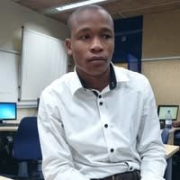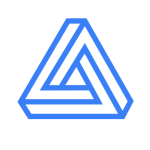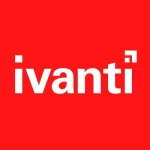What is our primary use case?
We do it for our OS patching across multiple clouds. If we don't put GE Vernova on there, then I can say we use it for
AWS and
Azure, plus on-prem. It's used across OS platforms too, so Windows and Linux-based. Our OS team uses it monthly to patch, and then we also supplement third-party software, such as Chrome, Edge, Notepad++,
Wireshark, and all that software that people will install and forget to uninstall and forget that they have to patch it. We do that almost weekly as well.
What is most valuable?
My favorite feature is reoccurring jobs. We had some requirements where we needed some options added to do reoccurring jobs, and they were able to add that in. Now we mostly use reoccurring jobs, and we don't have to touch them. The hardest part now is just getting change controls through our change management team instead of actually creating the jobs.
It has simplified so much from a cost overhead and perspective.
What needs improvement?
For
Qualys Patch Management, I actually talked with their product manager last week during their conference. Unified QQL needs improvement because while they have QQL in
Qualys Patch Management, it doesn't pull in the same tokens as VMDR or
CCM, so I can't search by similar things. Also, grouping or foldering for Qualys Patch Management jobs would be beneficial because if different groups own different jobs, it all gets dumped into what is essentially a flat file. You're just scrolling through it. You can search, but if we were able to do foldering, that would be great. The third piece would be having an approved catalog. For example, instead of my IT teams doing the patching, I wanted to enable our internal customers, our app teams, to run the jobs themselves but only on patches that we say are good - a curated catalog that the company patch admin approved.
Their frontline support could be improved. I'm really close with Qualys and spoke at the conference last week. They already know all this. They know that their support could be better. They just need to get more knowledgeable and not necessarily seem to have to pass the buck to engineering or VulnSig or the product teams.
For how long have I used the solution?
We've been using it since April of last year, so April of '24, which is approximately 18 months.
What do I think about the stability of the solution?
There are times where Qualys sometimes delays or doesn't have the catalog updated. For example, Red Hat comes out with an update and a week later, it wasn't in the Qualys catalog, which causes us to scramble.
What do I think about the scalability of the solution?
On our pod, we don't experience issues. One of my colleagues on a different pod has issues there. I'm on their biggest pod that brings in the most revenue, so they're very cautious with what they do on that.
How are customer service and support?
Their frontline support could be improved. I'm really close with Qualys and spoke at the conference last week. They already know all this. They know that their support could be better. They just need to get more knowledgeable and not necessarily seem to have to pass the buck to engineering or VulnSig or the product teams.
How would you rate customer service and support?
Which solution did I use previously and why did I switch?
We used
WSUS and custom scripts for Linux before. On-prem, we used SSM for
AWS and Patch Management for
Azure. It was complicated because there were so many different moving parts. That's where Qualys Patch Management comes in and is able to work across all platforms. It's easy because you don't have to manage all kinds of different things for every cloud. Your agent's already on the box because we have a rule that every server has to have an agent on it.
How was the initial setup?
The setup was actually easy. We already had VMDR deployed and agents everywhere, so it was a couple clicks to enable it.
What about the implementation team?
The implementation took approximately a month, though some of that was due to our delay. We had one to two people involved, and part of the timeline was due to our internal processes, not Qualys Patch Management.
What was our ROI?
You can always drive pricing down, but I think it's reasonable. For what we get out of it, I think it's a reasonable investment.
What other advice do I have?
I think that's where we have to go as an industry because you can't address everything all the time. Adding the risk on top, if it's an external asset compared to something internal inside your vault, the risk is much greater for exfiltration of data. The risk-based approach absolutely is the right way to go about it.
I rate Qualys Patch Management a nine out of ten.
Which deployment model are you using for this solution?
Hybrid Cloud
If public cloud, private cloud, or hybrid cloud, which cloud provider do you use?
Other
Disclosure: PeerSpot contacted the reviewer to collect the review and to validate authenticity. The reviewer was referred by the vendor, but the review is not subject to editing or approval by the vendor.
















